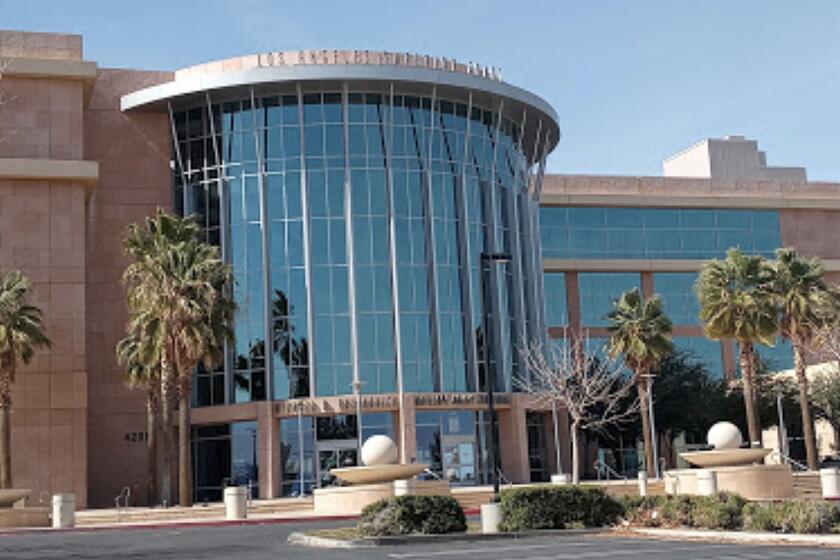A System in Critical Need
- Share via
We don’t watch “E.R.” in our house. Too many defibrillators. Too much blood. Too many episodes where children are in peril. Imperiled kids R not us.
In fact, we don’t like to think too hard about the bad things that might happen, God forbid, to us or our loved ones someday. So the other morning, when we turned on the TV and learned that a rescue chopper had crashed, killing three emergency workers and an injured child, we flipped the channel to Nickelodeon.
That was Monday. Since then, it has gotten considerably harder to avoid thinking about the Los Angeles City Fire Department helicopter that fell to earth en route to Childrens Hospital in Hollywood. There have been questions: What about the tail rotor, the condition of the chopper? What about that age-old demon, budget cuts?
But of all the questions, perhaps the most troubling is the most basic: Why did that injured child have to be airlifted at all? It sounded outrageous, and it is: There are two trauma centers in the San Fernando Valley, where she was severely injured in a car crash. But neither is designated to offer critical care to kids.
If I were a parent in the San Fernando Valley, I’d say this represents a gaping hole. There are something like 1.8 million people in the Valley, many thousands of whom are kids, and for years now, when bad things have happened to them, they have had to be choppered to hospitals on the other side of the hill.
Paramedic Capt. William Wells, who supervises emergency medical systems activity for City Fire, says that injured kids are now being airlifted out of the Valley at a rate of about a child a day.
“Most of the need,” Wells said, “is either traffic accidents or near-drownings. Last Saturday, when the weather was nice, we had to use the air ambulance four times.”
This seems like a lot, considering the fact that the Valley is part of a big city, as opposed to, say, a remote jungle village where you would expect airlifts all the time.
Granted, air transport has become an important and common part of our emergency medical system, but as high costs and uninsured patients have whittled away at the number of trauma units across the county, whole sections of Greater Los Angeles have come to rely on air ambulances, and not only for kids.
In the east San Gabriel Valley, for instance, there isn’t a trauma center at all. There were three in the 1980s, but all have closed. Now if your husband is critically injured in a car accident, or you discover your toddler unconscious at the bottom of the swimming pool, the likelihood is that they’ll have to be flown to one of five hospitals elsewhere in the county that rotate as that area’s provider of trauma care.
Not everybody sees this as an outrage. The system, it is noted, has worked well so far. Though 11 trauma centers have closed since 1985 in Los Angeles County, 13 remain. And of those, nine are approved to offer pediatric critical care.
The crash that claimed the life of 11-year-old Norma Vides-Anaya and three career emergency workers on Monday was the L.A. Fire Department’s first fatal airlift accident in 24 years. Ground ambulances can crash, too, or get stuck in traffic.
And trauma centers, great as they are, cost many millions of managed-care dollars to maintain.
But let’s face it, there is a world of room for this system to improve. “We’ve made do,” agrees Bonnie Sinz, who oversees the trauma care network for the county Department of Health Services. “We don’t want to just make do.”
To this end, the county has been working with Northridge Hospital Medical Center, which is considering applying for status as that pediatric trauma center the San Fernando Valley so sorely needs. (This is involved. There are the usual concerns about more patients who can’t pay. And then there’s the matter of how to snag the requisite pediatric sub-specialists--pediatric cardiologists and the like--who must be persuaded that there’s a reason for them to leave, say, a prestigious teaching hospital near Beverly Hills so they can go to the Valley to be on exclusive, round-the-clock call.)
All of which adds up to precisely the sort of big-picture, cost-benefit muddle that most people don’t like to focus on. When bad things happen our first instinct--our first need--is to change the channel, to look away.
But the real solutions always seem to be in the gray areas that demand so much attention--areas of cost and benefit, of better and worse.
What happened on Monday was awful, and it reminds us of the flaws that remain in the system. On this one, we can’t afford to avert our eyes.
*
Shawn Hubler’s e-mail address is [email protected].
More to Read
Sign up for Essential California
The most important California stories and recommendations in your inbox every morning.
You may occasionally receive promotional content from the Los Angeles Times.










